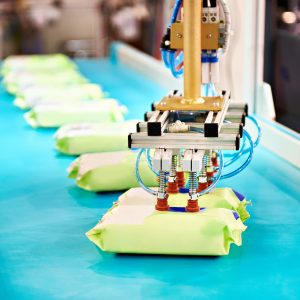For many consumer packaged goods (CPG) companies, package design efforts are often scattered across multiple groups and suppliers using different systems – leading to rework, delays, higher costs, quality issues and recalls. The sustainability movement in consumer packaging is putting even more pressure on companies to change their ways in order to deliver profitable innovation and sustainability. Join Dassault Systèmes at Pack Expo 2019 (Booth #LS-5909) taking place at the Las Vegas Convention Center from September 23-25th, and see how virtual packaging can significantly improve sustainability in consumer packaging, reduce package design cycles, cut packaging materials costs and reduce the chance for recalls. In addition, realistic simulation of packaging from concept to store shelf can be the catalyst for innovation and company growth.
During Pack Expo, Ray Wodar, Consumer Packaged Goods & Retail Industry Director for Dassault Systèmes will discuss the leading trends and breakthroughs in packaging in his presentation, Accelerate Sustainable Packaging in the Age of Experience on Monday, September 23 at 10:00 AM on the Innovation Stage 2 (C-1045).
We had the chance to catch up with Wodar ahead of Pack Expo, to get his take on key business drivers in today’s CPG industry.
What are some of the key forces driving the sustainability movement in consumer packaging?

Like many trends in the CPG industry, the sustainability movement is being driven by consumers, who are acutely aware of the effect that non-sustainable products have on the environment. The millennial consumer, which will account for 40% of discretionary spending in the U.S. by 2020, has a particularly high demand for sustainable packaging. These consumers underscore the critical need for CPG companies to revisit their approach to packaging with a focus on ramping up sustainability.
In Europe, governments have been more progressive in driving regulations around sustainability. France, for example, has banned plastic bags distributed at checkouts. The EU recently passed a ban (taking effect by 2021) on all single-use plastics, such as plates, cutlery and straws. To be in step with these initiatives, CPG companies in Europe have instituted their own sustainability initiatives to begin eliminating plastic from their packaging.
How can today’s CPG companies approach packaging development differently, to optimize future packaging and accelerate sustainability?

Companies need to think about sustainable interventions in each key stage of the packaging value chain. Starting with material suppliers – for example, which packaging materials can better drive recyclability or biodegradability? Packaging suppliers can choose to ‘lightweight’ the package to remove unnecessary material without effecting the performance or shelf life. And moving beyond just the consumer package, companies need to rethink the secondary or tertiary packaging so that case-packs and pallet configurations are optimized. Another key area is to optimize transportation routes within the journey to the consumer to reducing cost, time and greenhouse gas emissions while enabling faster delivery.
What are the key technologies that manufacturers can implement to drive sustainable packaging innovations?
Virtual modeling is perhaps the fastest route to optimized sustainable packaging. This technology can be used in the laboratory to explore and test new materials for packaging. And packaging simulation capabilities can test the viability of different designs without needing a physical prototype. This allows the packaging ecosystem to consider more designs in less time.
Manufacturing simulation is another technology that can be very beneficial to use, since the process of manufacturing consumes much of the energy and can create much of the material waste. Companies are also able to model the transportation of packages in two critical ways. On the one hand, virtual modeling can optimize the space inside the carton and the pallet to create more full truckloads. On the other hand, the truck routes themselves can be optimized with logistics simulators with powerful algorithms which identify the shortest, most efficient routes. And, of course, simulation can be used to better understand the consumer experience – how the product will fit in the human hand, how it appear on the retail shelf and even how it will look in the home.
Register Here for a complimentary Expo Pass, and stop by Booth #LS-5909 in the Lower South Hall of the Las Vegas Convention Center to experience how virtual simulation drives CPG innovation from concept to customer – reducing waste at every stage and creating new value.

